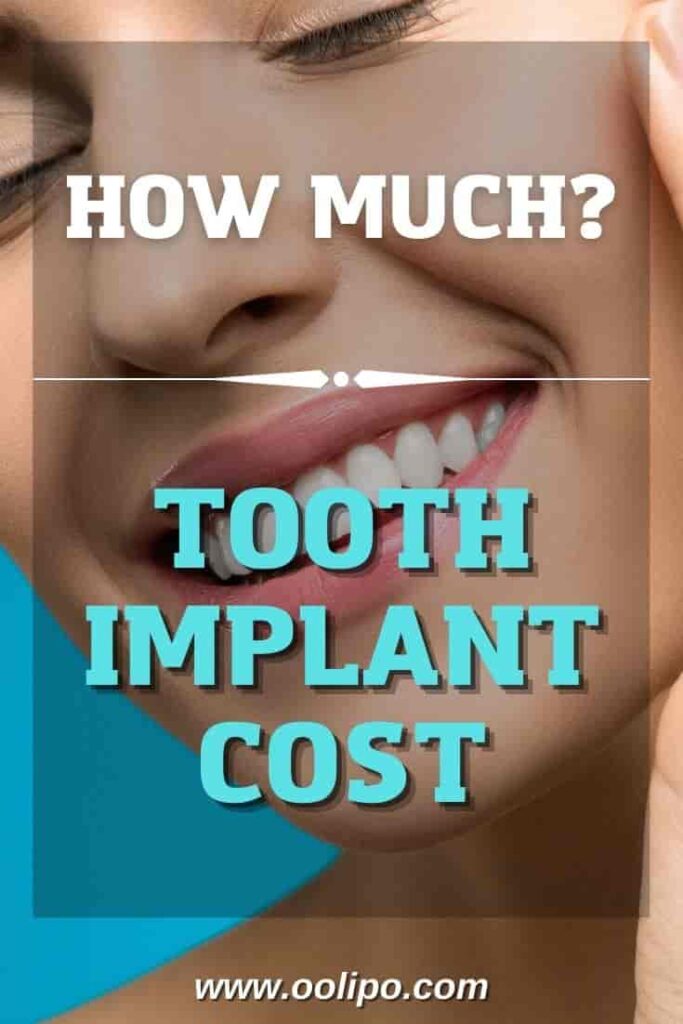Dental implants are a very good solution for people to get rid of the problems they experience with their unhealthy or missing teeth. This is a successful method, but its prices may not be affordable for everyone. We researched dental implant cost and created content for you, and if prices change in the following years, we will update our content.
Since all dental implant procedures are not the same, their prices are also different and the price range is unbelievably wide. Dental implant procedure has multiple parts and fees can be very high as each part is priced separately.
7 factors affecting the cost of dental implants and implant placement:
* Dental examination and 3D imaging
* Tooth extraction: Extraction of rotten or problematic teeth
* Installation of dental implants
* Placement of abutment hardware
* Manufacturer of a dental implant crown
* Placing the produced crown
* Bone grafting
How Much Does a Dental Implant Cost?
Sometimes, even though there are campaigns, a separate fee is required for each item we have listed above. For example, computerized tomography application and various scans (CT scan) and determination of your suitability for dental implants can be done free of charge. If 3D viewing is to be charged, a fee of $350 to $550 may be charged. The final price may surprise you, so you should evaluate dental services by price as well as success rate.

In order to be able to apply this process, you must be a good candidate, when you go to the dental office, you should get information about the type of implant after getting information about the additional costs and overall cost. For oral health, a surgical procedure should be performed and the most advanced methods should be used.
What Is The Average Cost For a Full Set of Dental Implants?
Although teeth implants are not like real teeth, you can still get natural teeth appearance and you can use your implants for the long term. The average cost for a single tooth implant is between $3,000 and $4500, but if you want to have all your teeth, not a single dental implant, the total cost can go up to $100,000.
While searching for tooth replacement options for missing teeth, we see that there is no standard price. Dental implants cost can vary a lot and you may have to pay higher fees. Since Healthy Teeth affects our quality of life so much, we, unfortunately, do not have a chance to be treated, but if we research treatment options enough, we can find a suitable place for a single implant or other oral surgical procedures.
When you lose your real tooth, you can decide to have dental implant surgery to have a tooth with a natural tooth appearance. If you have more than one tooth do this, you can get a better price, the cost of a full mouth is always more affordable, according to the number of implants, everything can change. But if you don’t need this and you only need a dental surgeon for one tooth, the price of dental implants can be quite expensive.
If you need to fill 3 or 4 adjacent cavities and you have healthy gums, you can create dental bridges with only 2 implants and get them done cheaper, Your first job may be to have an artificial tooth root. You do not need four implants, but if you have gum disease, this may need to be corrected first. After you heal, you can have many dental implants. We can say that all of these processes are similar to cosmetic procedures.
Does Insurance Cover Dental Implants?
For payment, an insurance company will create dental insurance plans for you, but these dental plans may not always be suitable for you. You may need to have a flexible spending account, do not decide in the initial consultation. You can also solve your problem by using traditional dentures instead of implants and you may not need your health savings account. Traditional dentures can be used easily by being fixed to the upper and lower jaw. The average cost of dental implants can also correspond to a price that is affordable enough to be paid with credit cards.

If you think the cost of an implant is expensive, you can find insurance companies that offer a monthly payment option, these alternative options may not be the best option for you, but we can say that the best way for the dental work you want.
It may be a good idea to get information about health insurance in addition to the cost of a dental implant at the first appointment from the dentist. Dental healths are a very serious medical condition, even if dental insurance providers are not supportive, you should definitely find a permanent solution for dental implant treatment.
Even the average dental implant cost can sometimes be as expensive as house payment plans, but you can benefit from dental insurance covers according to the type of dental implant.
Other Issues Related to Implants
You can consider implants as an investment because of their price because the prices are increasing day by day. We think that studies on dental health will reduce costs by finding new solutions in the future, but we should not waste time on health, it would not be right to wait for treatment.
Pros of Dental Insurance
* Allows you to diagnose your oral diseases early
* Allows you to pay less money
* You can also use it for aesthetic appearance
Cons of Dental Insurance
* If you do not take advantage of the insurance, the costs can be very high.
* If you have not allocated a budget for health, your treatment may be delayed
* Delayed treatment may cause you to lose your other teeth.
Zygomatic Implants
If you want zygomatic implants, you will have to pay a little more, because it is not easy to place zygomatic implants, they need to be done by more experienced dentists.
This method is good news for patients with gum and bone loss because it allows even patients with such problems to have implants. Zygomatic implants are great solutions for dental problems.
What is a Zygomatic Implant?
The zygomatic implant is applied differently from conventional implants and is suitable for patients who have never had an implant in the upper jaw. If you have advanced bone resorption disease, the zygomatic implant may be a solution for you. Implants are 8-10-12 mm long, but zygomatic implants can be up to 30-50 mm long. It is a very important method for patients who need implant treatment but cannot be treated due to problems such as osteoporosis.

When there is not enough space to be implanted in the upper jawbone, dental treatment can be applied using the zygomatic implant and the cheekbone. Since there is enough space in the cheekbone, an average of 40 mm implant can be placed.
Who Can Use Zygomatic Implants?
In general, people who have not used prostheses for many years may prefer to use implants. Since these patients are toothless for a long time, their bones are melted and normal implant treatment cannot be applied. Since there are no bones to be implanted in normal and the prosthesis is starting to be a problem, the zygomatic implant is preferred. A zygomatic implant can be applied to all patients whose upper jaw is considered unsuitable for implantation and very good results can be obtained.
How Are Zygomatic Implants Procedures Performed?
The first procedure to be done to the patient is to determine the jawbone structure by taking a volumetric dental tomography and implant adjustments are made accordingly. In order to show the results to be obtained after the operation, a prosthetic tooth is applied to the patient, and the design is arranged until the patient likes the appearance. After the necessary design and analyzes are made, the patient is taken into surgery and after the operation, which lasts for about 2 hours, zygomatic implants are placed in the upper jaw.
After these procedures, we recommend our patients to come for a check-up every 6 months or once a year and use a special toothbrush.
A Low-Cost Alternative: Nesbit Partial
Nesbit Partial is not a treatment, it is generally used as a temporary solution and prevents you from being toothless until the time of surgery. Missing gaps in your teeth are filled and you can gain a beautiful smile. The downsides are that you have to take it out and clean it after eating, but it’s not an expensive method.
Other Dental Treatment Methods
Dental treatments are not limited to implants, the most appropriate treatment method for you should be determined and applied.

Oral Diagnosis and Radiology
Oral diagnosis is the diagnosis of oral and dental diseases or other diseases that show symptoms in the mouth using radiological imaging techniques and planning the necessary treatments. Diagnosis and treatment planning is made with digital imaging methods (Panoramic x-ray, RVG, Computed tomography) in dental treatment clinics, and the most appropriate method is selected for the patient.
Oral, Dental and Maxillofacial Surgery
All surgical procedures such as operations of impacted wisdom teeth, root tip resections, jaw fractures, cyst and tumor operations, implant operations, and jaw joint treatments should be performed by oral, dental, and maxillofacial surgeons in clinics, otherwise, you may encounter problems that cannot be treated for life.
Conservative Dentistry
Composite fillings are used in small and medium-sized dental tissue losses and with the development of technology, very successful results are obtained. Fractures, color changes in the anterior teeth, amalgam fillings in the posterior teeth can be repaired with composite fillings and a beautiful appearance can be obtained by closing the gaps between the teeth with composite fillings.
After the decayed tooth tissue is cleaned, a composite filling material compatible with the natural color of your tooth is used and cannot be distinguished from your natural tooth.
With aesthetic composite restorations, functional, anatomical, and aesthetic defects can be corrected with very little intervention, and a new form of teeth and a beautiful smile design can be given to the patient in a short time like an hour, without touching the natural tooth tissue.
Endodontics
In the space in the center of the tooth, there are vessels and nerves called pipas, their task is to give vitality and life to the tooth. Poorly performed restorations, bruises around fillings, or accidents can damage and infect these nerve and vascular tissues.
If you have pain, abscess, or swelling in your teeth, endodontic treatment, also known as root canal treatment, is applied to these teeth. With the endodontic treatment method, the vessels and nerves in the pulp are removed, the pulp cavity is disinfected, the channels are widened and made suitable for filling.
Thanks to this method, infection, and pain can be treated without the need for tooth extraction, and thus patients can recover without losing their teeth.
Prosthetic Dentistry and Crowns
The crown provides a beautiful appearance by covering the teeth and is used when there is a loss of tooth tissue that cannot be restored by filling. The entire surface of the tooth is covered with a crown and a natural appearance is provided by giving a shape suitable for the jaw structure.
As crown materials, zirconium and aluminum supported porcelains or full ceramic materials are used, so they can create a more robust, healthy, and aesthetic appearance.
Bridge
The bridge method is preferred in cases where implants cannot be applied, the teeth around the missing tooth area are small and covered, so the missing teeth are replaced. The most suitable materials are selected according to the region where there is a missing tooth, porcelain, and ceramic materials are preferred as in the production of crowns.
Pedodontics
The department dealing with dental problems of all children between the ages of 3-12 is called pedodontics. Fissure sealants and fluoride applications are made by experts to prevent dental caries, and at the same time, whether orthodontic treatment is needed or not is determined. Treatment methods with general anesthesia can be applied in non-hyperactive children.
Orthodontics
Orthodontics is a specialty that deals with irregularities in teeth and jaw disorders. It is possible to direct the growth of the jaw in children and to treat the visual disorders caused by behaviors such as thumb sucking.
Thanks to the tooth color of the wires used in the treatment, visual concerns are eliminated, and orthodontic treatment can be applied at any age. Thanks to newly developed technologies, braces can be placed on the back of the teeth. While the crooked teeth are being corrected, no one can understand that you are being treated. It is a very important treatment method, especially for children who are not satisfied with the appearance of the wire.
Periodontology
All treatments related to gums, bones, and ligaments are carried out in this department and they work to prevent periodontal diseases. Apart from this, hormonal changes experienced during pregnancy can cause insufficient gum disease, methods such as root correction and flap operation are applied by specialists to treat them.